Notes: On 9 September 1836 Thomas Batty Addison met with 12 shareholders at Preston Town Hall to discuss the possibility of building a railway line from Preston into Longridge. It was decided that in order for the plans to go ahead, there must be capital of £30,000 in 600 shares of £50 each:
‘We hope that the spirited proprietors will form themselves into a trading company for the conveyance of stone, limestone from the kilns and quarries near Longridge; and the transit of corn and other commodities from Preston to Clitheroe and other parts.’
‘To ensure success cheapness must be the order of the day.’
The Preston & Longridge Railway certainly achieved cheapness and success. It was the cheapest railway in England when it first opened. It was reported that:
‘We are glad to find that the traffic on this line, which, by the way, is worked the cheapest of any in England of the same length, is fast increasing. We understand that the sightseers and holiday folks will have an opportunity of witnessing the wonders of our Whit Monday. Several extra trains offer the convenience of passengers to and from the scene of attraction, being intended to be run on that day.’
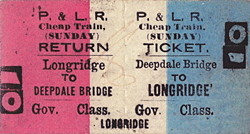 |
The Preston & Longridge Railway was primarily planned and built to carry stone from the quarries on Longridge Fell into Preston where it could be distributed. Longridge stone was used to build Liverpool Docks and Bolton Parish Church, as well as flagship buildings in Preston such as the Town Hall, the Harris Library and St Walburge’s Church. |
When the railway opened in 1840, wagons travelled down the steep incline into Preston by gravity, reaching speeds of 40 mph. Horses then pulled the wagons back up the track to Longridge.
Plans to Extend the Railway Line into Yorkshire
In 1846 the Fleetwood, Preston & West Riding Junction Railway Company planned to extend the Preston & Longridge Railway line from Grimsargh into Yorkshire. The line between Deepdale Street and Grimsargh was to be widened to double track, and then at Grimsargh the line was to curve to the right towards the Ribble Valley.
| The line was to run east through Hurst Green and Mitton to Whalley where it would head north through Clitheroe and Chatburn to Elsack, just south of Skipton, where it would join the Leeds - Bradford Extension Railway. This extension of the line would enable Lancashire passengers to travel into the spa towns of Harrogate and Knaresborough and Yorkshire |
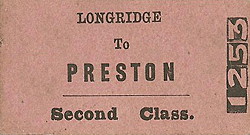 |
passengers could travel to the seaside resorts in
Blackpool.
The first work on the extension of the line was the excavation of a cutting south of Hurst Green. However, the Parliamentary Bill was thrown out by the House of Lords due to opposition from Lancashire landowners. The shareholders withdrew their support and the plan was abandoned. The cutting at Hurst Green, which still exists today, is the only evidence of this proposed railway extension.
The Line Opens to Passengers
The railway allowed the Longridge quarries to meet the increasing demand for stone by transporting it quickly to Preston to be redistributed to the growing Lancashire towns. The Preston & Longridge Railway was not only used for transporting stone, but also used for passenger travel and consequently there were passenger stations along the line. Longridge was the terminus, and the only passenger station on the line into Preston to be recorded when the line made its first appearance in the Bradshaw timetable of July 1848.
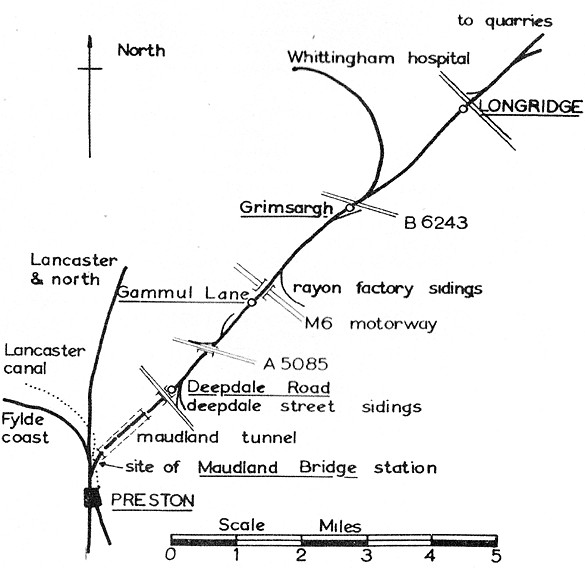 |
For many years passenger trains operated from sidings behind the Towneley Arms Hotel, which was also the location of the ticket office. The permanent station was built in 1872, by which time the line was under joint ownership of the London & North Western Railway (LNWR) and the Lancashire & Yorkshire Railway (L&Y). It was constructed on the site of the original sidings and backed onto the Towneley Arms Hotel. Trains used a level crossing over Berry Lane, the town’s main shopping street, to approach the goods yard and quarries. The station had a long single platform, which was unusual in that at its Preston end it faced onto a section of single track for a short distance but then curved inwards to accommodate a set of points; these created a section of double track for the rest of the platform’s length which continued beyond the level crossing.
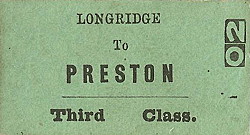 |
On the platform there was a single-storey sandstone building which was physically attached to the rear of the Towneley Arms. A canopy extended along the length of the station building and the side of the Towneley arms. At the north-eastern end of the station, on the opposite side of the line and adjacent to the level crossing, was a small signal box with a brick |
base and timber upper cabin.
The history of every railway is enlivened by local tales and folklore. A chap called Bleasdale used to race the train on a penny-farthing bicycle from Stone Bridge to Deepdale Bridge. He used to leave the bridge as the train left Longridge station, and if he could reach Grimsargh before the gates closed he would usually beat the train to Deepdale.
Train Services
The journey to Preston took 18 minutes.
December 1895
Departures:
Weekday Longridge to Preston: 8:10am, 10:00am, 11:45am, 3:20pm, 5:35pm, 7:00pm and 9:00pm.
Saturday: additional departures at 1:25pm and at 11.00pm.
Sunday: departures at 10:00am, 3:40pm and 9:00pm.
Arrivals:
Weekday from Preston: 6:40am, 9:25am, 11:35am, 2:25pm, 5:28pm, 6:35pm and at 8:53pm.
Saturday: additional arrivals at 12:45pm and 10:53pm.
Sunday: 9:53am, 3:30pm and at 8:53pm.
July 1922
Departures:
Weekday Longridge to Preston: 6:45am, 8:05am, 10:00am, 11:30am, 1.05pm, 2:35pm, 4:45pm, 5:53pm, 7:05pm, 8:30pm and 9:53pm.
Saturday: 11:30am service was retimed to run at 12:20pm and the 1.05pm to run at 1:15pm. There was an additional service for Preston at 11:10pm.
Sunday: 7:45am, 11:15am, 3:50pm and at 6:15pm.
Arrivals:
Weekday from Preston: 6:35am, 7:45am, 9:37am, 11:19am, 12:37pm, 2:25pm, 4:12pm, 5:46pm, 6:59pm, 8:17pm and at 9:43pm.
Saturday: 12:37pm was retimed to arrive at 12:59pm and there was an additional arrival at 10:52pm.
Sunday: 7:25am, 11:01am, 3:36pm and at 5:43pm.
This was the best passenger service that Longridge had ever had.
Towards Closure
| On 1 January 1922 the L&Y was absorbed by the London & North Western Railway. At the ‘grouping’ in January 1923 Longridge station became part of the London Midland & Scottish Railway (LMS). Whilst in many towns the railway station was inconveniently sited to serve the centre, this was not the case at Longridge. Nevertheless by the late 1920s a frequent service of |
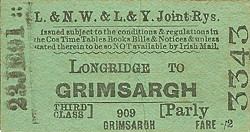 |
motor buses was connecting the town with Grimsargh and Preston, and in the face of dwindling passenger traffic the LMS withdrew the service with effect from 2 June 1930. The last passenger train having departed on 31 May 1930. However goods services continued to operate.
Engines on the line
It was not until 1848 that a locomotive was used on the railway. The first steam locomotive on the Preston & Longridge Railway in was named Addison after Thomas Batty Addison Esq., the chairman of the company. In 1856, the Preston & Longridge Railway Company purchased a brand new locomotive for £1,600 which they named Gardner. They also purchased another locomotive four years later for £1,160. This was also named Addison, after the first steam locomotive on the railway line. Gardner and Addison could be seen on the line until 1876 when they were sent for disposal.
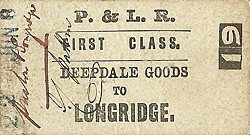 |
After Addison and Gardner were sold, goods trains were worked by Francis Webb’s 0-6-0 engines, built in Crewe. These had the nickname ‘Cauliflowers’ because the company coat of arms above the centre wheel resembled the vegetable.
Passenger trains were also mainly headed by Francis |
Webb’s engines. Tank engines with wheel arrangement 2-4-2 hauled the passenger trains almost until the line was closed to passengers in 1930.
After Closure to Passenger Services
In January 1936 there was an unusual working from Longridge that
was published in the Lancashire Daily Post:
‘Resembling a Noah’s Ark, a train left Longridge this afternoon for Highworth, near Swindon, a distance of two hundred miles.
It comprised eleven trucks of livestock and thirteen of farm implements and sectional cabins and practically the whole of the farm stock of Hacking Hobs farm, Longridge, the property of Mrs Kate Hollas, of Red Scar, Grimsargh, near Preston.
Mrs Hollas has taken up Parsonage Farm, Highworth, following the sale of Red Scar to Messrs Courtaulds. These were on the train: six shires, a hunter and two foals, a Shetland pony, forty-five sheep, a bull, fifteen cows, twenty-seven stirks, eighteen yearlings and four calves. The farm implements included carts, traps, ploughs harrows, a turnip cutter, a harness and feeding utensils.
The cows were milked before leaving and will be at Parsonage Farm in time for early morning milking, and by 9am tomorrow it is expected that the whole of the livestock will have been safely transported and will be grazing in the fields of Wiltshire.’
In this unbelievable journey Mrs Hollas transported 120 animals 200 miles by train. The only member of her household she did not take with her was her husband!
Despite the closure of the line to passengers in 1930, railtour special trains occasionally carried passengers along the line until the 1960s. The last steam-hauled passenger service to Longridge was the ‘Mid-Lancs Rail Tour’ on 22 September 1962.
In the last 20 years of goods operation, Stanier engines |
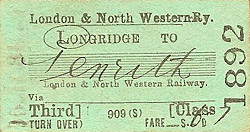 |
became the most common. The last steam loco on the line was the Stanier Class 5, which was carrying coal from Lostock Hall to Courtaulds factory sidings on 2 August 1968.
A new lease of life for Longridge station
After years of decline since the closure of the line in 1968 Longridge station reopened in 2010 as a heritage visitor centre, café and business centre. This is home to the Town Archive of historical photographs of the area and features special exhibitions on local history and how the Preston & Longridge Railway contributed to the development of the town’s stone and cotton industries. Since opening, schools and groups have been welcomed for special visits, talks and heritage trails.
Although the railway line has long gone, Longridge station has now returned to its heyday and is once again the hub of activity in Longridge; around two hundred visitors stop for a drink in the café each day, and the Farmer’s Market brings over a thousand visitors to the station on the last Saturday of each month. Longridge station is now a real centre for the community, holding regular events, and it is well supported by a team of 25 volunteers.
The author is Heritage Officer at Longridge station heritage visitor centre.
Tickets from Michael Stewart and Bradshaw from Nick Catford.
For further information see the Longridge town archive.
Sources:
|

old2.jpg)

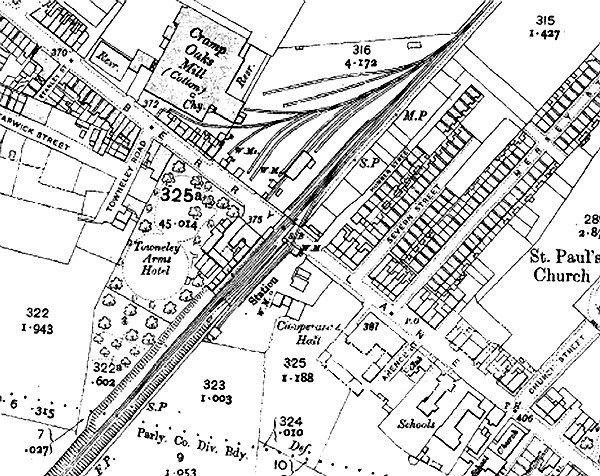
old5.jpg)
old6.jpg)
old9.jpg)
old1.jpg)
old4.jpg)
old7.jpg)
5.jpg)
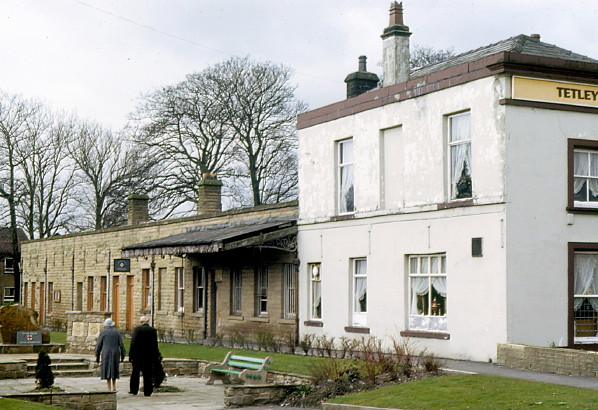
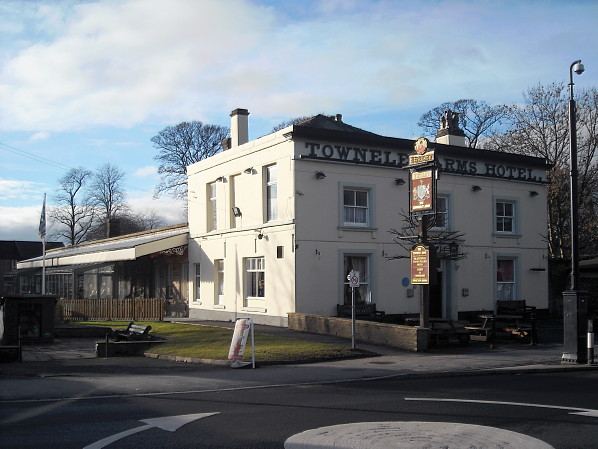
6.jpg)
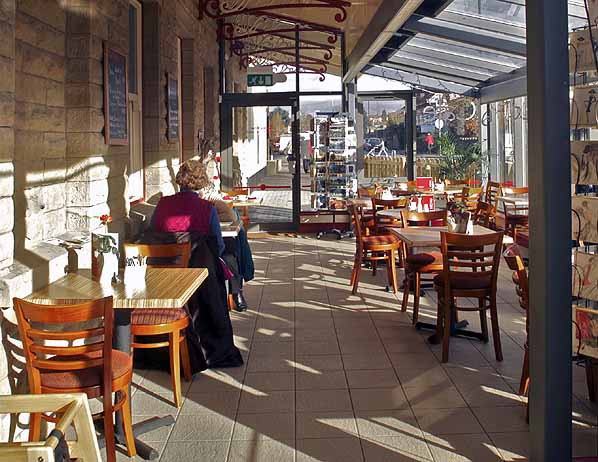








old1.jpg)
old8.jpg)
4.jpg)
old3.jpg)
7.jpg)
8.jpg)











 Home Page
Home Page